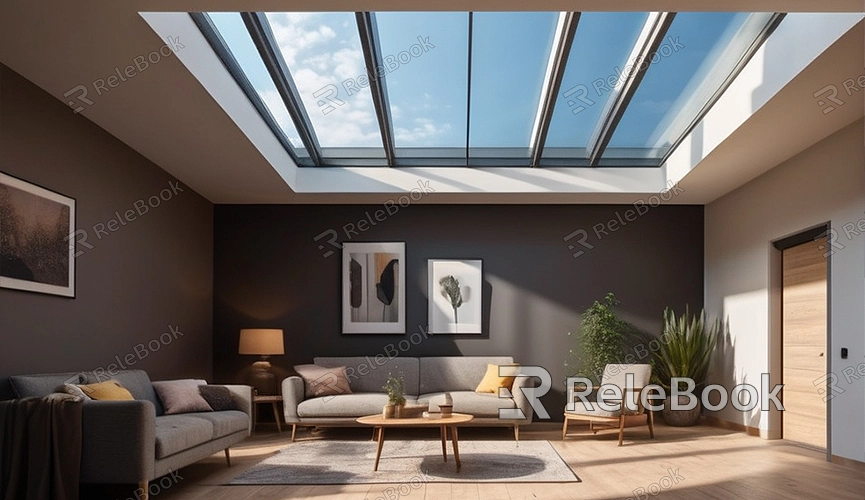Plaster Texture in Blender
Plaster texture is a common texture often used to simulate the appearance and feel of walls or ceilings, adding detail and realism to architectural scenes. In Blender, using this texture provides a rich selection for rendering 3D models.
This 3D texture can be downloaded from Relebook and applied to 3D models or scene rendering through the following steps:
1. Import Texture: Import the plaster texture material into the Blender project.
2. Apply to Model: Apply the texture to the wall or ceiling surface of the model, ensuring the model is ready to receive the texture.
3. Adjust Mapping: Based on the dimensions and shape of the wall or ceiling, adjust the texture mapping to achieve a natural effect on the model surface.
4. Adjust Material Parameters: Adjust the plaster material parameters, such as color, glossiness, etc., to achieve the desired effect.
5. Add Details: Add additional details such as plaster texture, indentations, etc., to enhance the model's realism and visual appeal.

Different parameter adjustments result in different rendering effects. Here are common rendering scenarios for this 3D texture in Blender:
1. Interior Design: Used to simulate plaster texture on indoor walls or ceilings, adding detail and realism to interior scenes.
2. Architectural Rendering: Used in architectural rendering projects to enhance the realism of building walls or interior spaces.
3. Historical Building Simulation: Suitable for simulating ancient architecture and historical scene reproduction, adding historical context to walls and structures.
4. Art Scene Design: Applied in modeling and rendering art scenes to add unique textures and decorative effects to artworks.
5. Movie Special Effects: Used in movie special effects and animation production to add realism and detail to the walls or ceilings of scenes.
Using plaster texture in Blender is essential for increasing the realism and detail of buildings and interior scenes. Plaster texture simulates the effect of applying plaster materials to walls, ceilings, or other surfaces, widely used in real-world architecture to provide smooth or textured surfaces. Here are several key roles of plaster texture in Blender:
Enhancing Realism: Plaster texture simulates the irregularity and subtle texture variations of plastered walls in the real world, increasing the realism of 3D scenes. These textures can replicate the subtle cracks, graininess, and imperfectly smooth surfaces that occur during the plastering process.
Improving Visual Effects: High-quality plaster texture enhances the visual appeal of architectural models and interior scenes. Carefully designed plaster texture adds depth and complexity to scenes, making them appear richer and more layered.
Enhancing Material Diversity: In Blender's robust material system, plaster texture can be combined with other materials and nodes to create complex materials with various visual effects. This includes simulating plaster of different colors, plaster with special texture effects, or even weathered plaster surfaces.
The flexible use of plaster texture in Blender provides a rich selection for the design of 3D models. Through proper parameter adjustments and texture application, various unique effects can be added to model rendering, enhancing not only the decorative aspect of the model but also creating more realistic and detailed architectural scene elements for designers. If you need many high-quality 3D textures and HDRI, or 3D model downloads, you can download them directly from Relebook and import the textures and 3D models into your project for immediate use.

